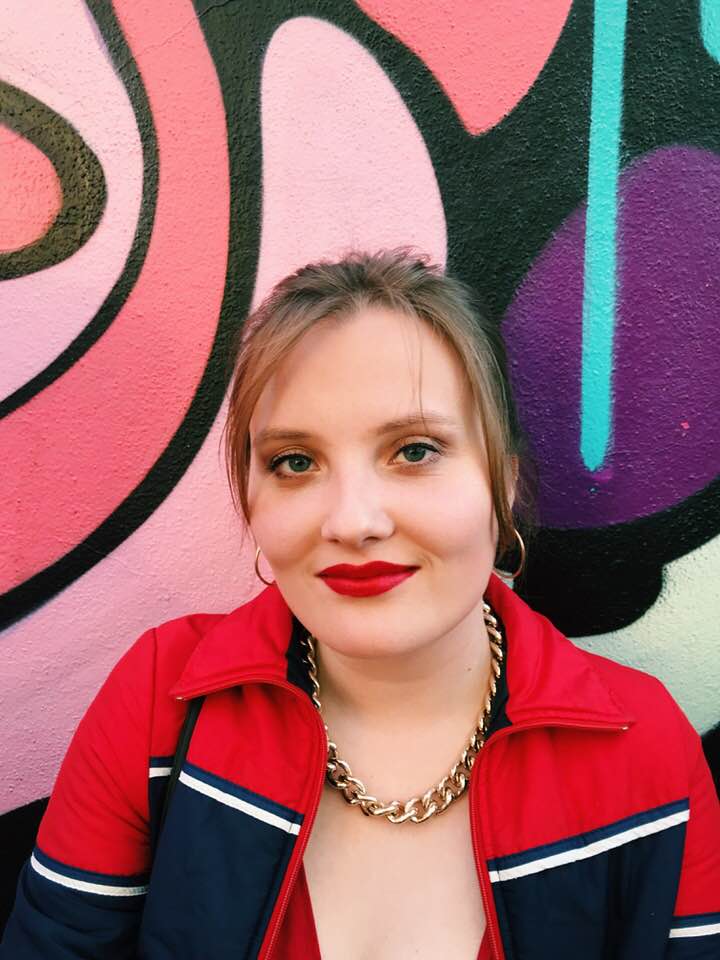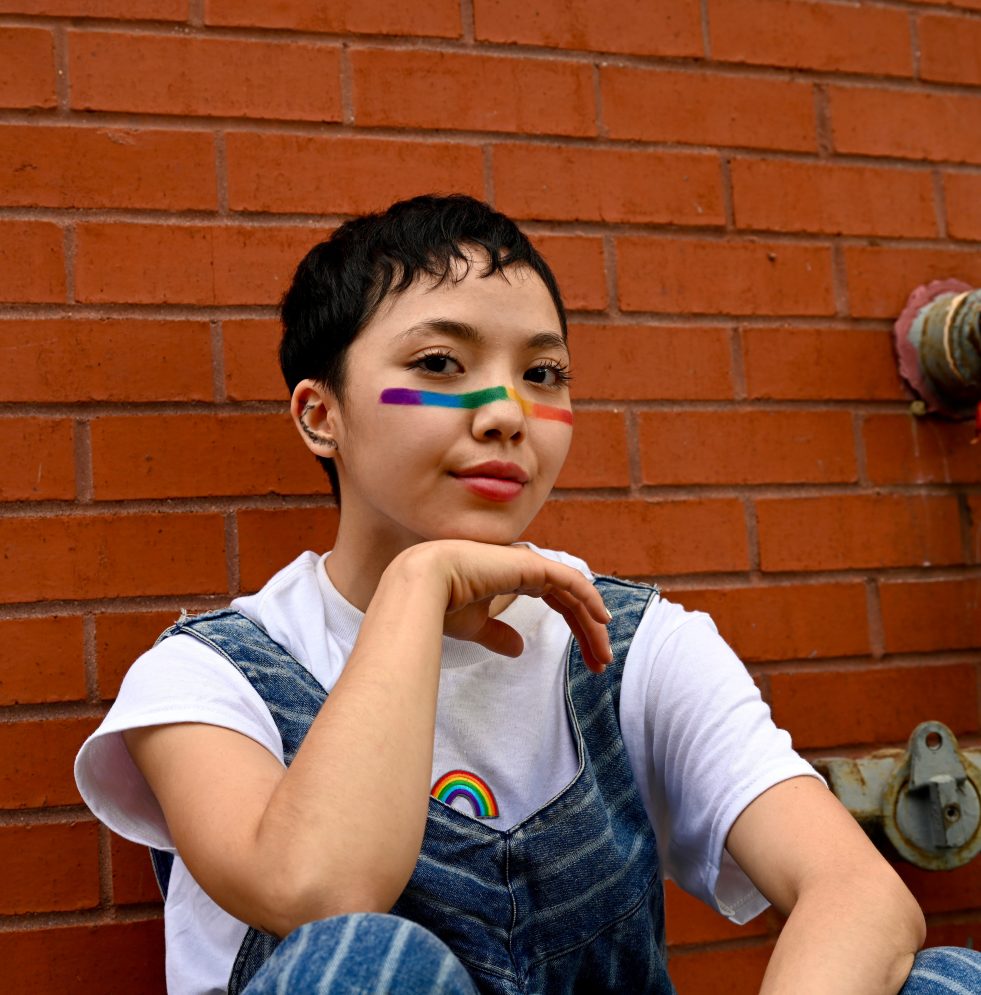Lack of representation in culture and research, as well as the denial of the existence of bisexuality entirely – referred to as bi erasure – can have some pretty heavy ramifications. Recent studies have shown that bisexual people have higher levels of depression, anxiety and self-harm than their gay and lesbian counterparts, and can feel alienated from queer and heteronormative spaces alike. Suspicion and animosity about it being “just a phase” has long been a harmful misunderstanding of bisexuality. Another false claim, as Carrie Bradshaw infamously (and terribly) once said, is that bisexuality is just a “layover on the way to gay town”. These false ideas and others have made the struggle for bisexual recognition and equality a long one. However, slowly but surely, bisexual people are being recognized, and are continuing the fight to take up more space at Pride and in the media we consume.
Bisexual icons: now and then
Throughout the worlds of literature, film and TV, bisexuality has a pretty rich cultural history. Early icons include the likes of Virginia Woolf. Her book Orlando has been described as “the longest and most charming love letter in literature” by the son of the woman the book is widely presumed to be inspired by, Vita Sackville-West. Billie Holiday and Oscar Wilde both had relationships with men and women, often conforming to the heteronormative expectations of the time in their married life but having queer affairs outside of it. Other famous bisexual men include David Bowie, who likewise “had no problem with people knowing [he] was bisexual”, although in later interviews he lamented the impact this may have had on his career in the USA. And Marlon Brando, a golden (though not unproblematic) Hollywood sex symbol, was relatively blasé about his bisexuality, saying in an interview in 1974 “like a large number of men, I too have had homosexual experiences, and I am not ashamed”.
Modern Bisexual Icons
A few modern day bisexual icons have helped continue to pave the way for bisexuality to become more open, embraced and championed. More recently, actors like Lili Reinhart – Netflix’s Riverdale star – have opened up about their sexual identity saying “although I’ve never announced it publicly before, I am a proud bisexual woman”. This no doubt has a huge impact on people in everyday life feeling comfortable in their own sexual orientation. Likewise, tween icon Kristen Stewart (in)famously dated her Twilight co-star Robert Pattinson for years and is now happily engaged to screenwriter Dylan Meyer, which is particularly groundbreaking as the star of such a famous teen franchise.
Bisexual Men
Bisexual men have often been a source of more intense suspicion and alienation than bi women. Even today relatively few male creatives and actors in Hollywood are openly bi. Jason Mraz expressed the confusion he felt whilst having experiences with men and also “dating the woman who became my wife”. The frontman of Green Day, Billie Joe Armstrong, has for a long time been openly bisexual, and in a 1995 interview went so far as to say he felt people “are born bisexual and it’s just that our parents and society veer us off” into thinking it’s not a viable or accepted option. I really did have to search long and hard for openly out, bisexual men in the media, which in many ways goes to show we’ve still got a long way to go in removing the stigma around bisexuality for men.
Media portrayals of bisexuality
Bisexual women in Film/ TV have notoriously been overly sexualised, and often fall victim to the male gaze. However, there are a few cultural contributions that have *actually* done bisexuality justice.
First up we have The Kids are Alright played by queer icon and everyone’s biggest crush Julianne Moore. Some might say this film plays into the damaging and false stereotype of bisexual people being more likely to cheat, and it’s worth being conscious of this before viewing. However, there’s plenty of nuances to this film about two mums raising a family and it’s well worth a watch. Appropriate Behaviour, written, starring and created by Desiree Akhavan is an incredible film that unpacks the cultural and familial prejudice of a Iranian family and their secretly bisexual daughter as she navigates queer relationships in New York.
Netflix’s Queer Hit: Heartstopper
Recent Netflix hit, Heartstopper, marks a huge moment in queer cultural history. In it, Nick, played by Kit Connor, begins to develop feelings for Charlie, a friend of his from school. It’s a beautifully crafted eight part series based on Alice Oseman’s graphic novel series and is particularly groundbreaking as it’s been categorised as “suitable for children”, a real victory for queer people the world over. Young teens sat at home questioning their identity and queer adults who’ve been clamouring to see the kind of young love they experienced growing up likewise rejoiced. (I watched it twice in 24 hours, once solo and then a second enforced watch with my housemate for good measure. I cried both times, obviously). The existence of young, bisexual characters, particularly teens, is still relatively rare, yet this kind of representation is so needed to help younger generations navigating their LGBTQIA+ identities to feel seen, respected and worthy of love.
What’s the deal with bi erasure?
Bisexual erasure or bisexual invisibility is a problem in which the legitimacy of bisexuality is questioned or denied outright, whether that be in culture or society at large. Bisexual people, by their very existence, threaten the rules and assumptions by which many people live. Bi people challenge the assumed “norms” and defy the simplistic categorisation that many people, often unconsciously, go about using in their everyday lives, assuming the gender and sexual orientation of people based on external appearances. Bisexual people don’t necessarily exist in rigid terms, are self-identifying, and are capable of having romantic or sexual relationships with a range of people across the spectrum of gender.
Also leading to bi-erasure, some members of the LGBTQIA+ community can believe that heterosexual-passing bisexuals don’t face the struggles, or threats of violence faced by those in queer relationships. This massively underestimates the struggles which the bisexual community faces. In fact, bi people suffer disproportionately higher rates of violence and hate crimes compared to lesbians or gay people, and are significantly less likely to be “out” at work too.
Bisexual Dating
There is a world of opportunity for dating as a bisexual person. If you’re thinking that you *might* be bisexual, welcome! You’re in good company. Dating apps or social networks like Killing Kittens, Feeld, Hinge (and the list goes on), are a good place to start and give you the opportunity to explore and revel in your bisexuality.
If you like to see how someone moves, smells or smiles in person first, that works too! There’s a whole host of events, from wholesome coffee mornings, to poetry nights, and if night-time exploration is more your thing there’s always club nights and sexy, liberating parties, too. If you’re someone that is bi-curious, a party could be a great way to begin. Just make sure that whoever you’re meeting is aware it’s an exploratory time for you. No one wants to be burned by being someone’s “experiment”. Experimentation can be great, so long as everyone knows that’s what’s up.
If you’re particularly interested in learning more about bisexuality, definitely check out The Bi-Ble – a collection of personal narrative essays about bisexuality (the name isn’t even the best bit). It covers the nuanced ways in which being a bisexual person can sometimes be quite an anxiety-inducing experience. You may feel like you’re stuck in the middle, not wholly a part of any community, but we at Killing Kittens just want to let you know that you’re wholly you, and you’re at home here. If bisexuality is a term that you feel fits, then BOOM! You’re bi baby, and you don’t need any kind of certificate or experience to prove it.

Tiffany Black (she/her) is a writer and comedian based in London. She loves love, but please don’t make her say it out loud. Currently, writing a one woman show in development for the Edinburgh Fringe 2023. The creator of 40 days and 40 nights un/satisfied, she writes on love, food, sex and power and also works as a brand and strategy consultant in tech (you know, to make actual money). Reach out to flirt, commission her, or to help you give your brand an actual personality. At the moment, she’s open to everything. In a really feminist way though, ok.
Follow her on Instagram: tiffanyblack___

